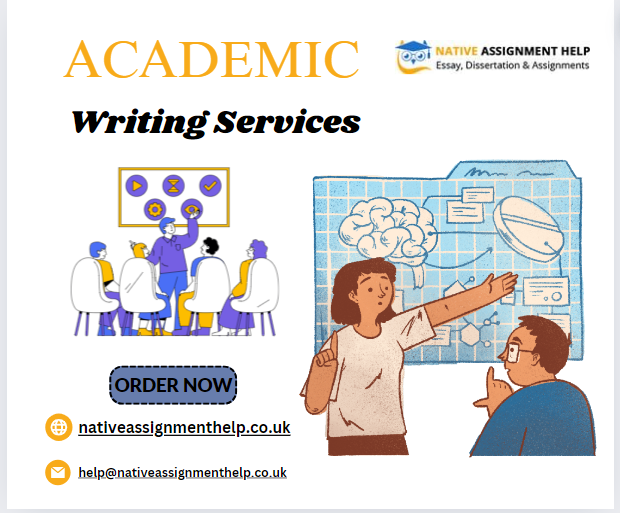In today’s digital age, technological advancements have revolutionized almost every field, including academic writing. With the rapid evolution of artificial intelligence (AI) and machine learning, academic writing services have undergone significant transformations. This article explores how these technologies are reshaping academic writing, enhancing productivity, and raising new challenges.
The Evolution of Academic Writing Services
Academic writing has come a long way from the traditional pen-and-paper methods. Historically, students and researchers relied heavily on manual processes for drafting, revising, and editing their work. However, the advent of digital tools brought about a seismic shift. Early word processors simplified typing and formatting, while the internet provided vast resources for research and citations. The current wave of technological advancements, driven by AI and machine learning, is pushing these boundaries even further.
Introduction to AI and Machine Learning
To understand the impact on academic writing, it's essential to grasp what AI and machine learning entail. AI, or artificial intelligence, refers to the simulation of human intelligence in machines that are programmed to think and learn. Machine learning, a subset of AI, involves training algorithms to improve their performance based on data without being explicitly programmed for each task.
AI in Academic Writing
AI’s influence on academic writing is multifaceted. One of the most noticeable applications is the automation of repetitive tasks. For instance, AI-powered grammar and style checkers like Grammarly or Hemingway can detect errors and suggest improvements in real-time. These tools are designed to enhance writing quality by correcting grammatical mistakes, improving readability, and offering stylistic recommendations.
Another critical application of AI in academic writing help is plagiarism detection. Tools such as Turnitin use sophisticated algorithms to compare written work against vast databases of academic publications and online content. This ensures the originality of the work and helps maintain academic integrity.
Machine Learning Applications
Machine learning enhances academic writing by leveraging algorithms to offer personalized feedback and writing suggestions. For example, predictive text and auto-completion features, found in many modern writing platforms, use machine learning to anticipate the next word or phrase based on the context of what the writer is typing. This not only speeds up the writing process but also helps maintain coherence in the text.
Personalized feedback systems are another significant application. Machine learning models can analyze a writer’s previous work and provide tailored suggestions for improvement. This level of customization helps writers develop their skills over time, addressing their specific weaknesses and strengths.
Enhanced Research Capabilities
AI and machine learning also play a crucial role in enhancing research capabilities. AI-powered tools can streamline the literature review process by quickly scanning and summarizing relevant studies. This capability not only saves time but also ensures that researchers have access to the most pertinent information.
Moreover, data analysis and trend identification have been significantly improved through machine learning. Tools that analyze vast amounts of data can identify emerging trends and patterns that might be missed through manual analysis. This helps researchers stay ahead of developments in their field and incorporate cutting-edge information into their work.
Ethical Considerations and Challenges
Despite the numerous benefits, the integration of AI in academic writing raises several ethical concerns. One major issue is the question of authorship and originality. When AI tools generate content or provide extensive feedback, it can blur the lines of who is considered the true author of a piece of work.
Bias in AI algorithms is another critical concern. AI systems are only as unbiased as the data they are trained on. If the training data includes biases, these can be reflected in the AI’s outputs, leading to skewed or unfair recommendations.
Privacy is also a significant issue, particularly with tools that analyze sensitive academic work. Ensuring that data is handled securely and ethically is paramount to maintaining trust in these technologies.
Case Studies and Examples
Several AI tools have made a notable impact in the academic writing domain. For example, Grammarly and Hemingway have become essential tools for many writers due to their advanced grammar-checking and stylistic suggestions. Similarly, Turnitin’s plagiarism detection system is widely used to uphold academic integrity.
Success stories highlight the positive impact of these technologies. For instance, researchers who have used AI-powered literature review tools have reported more efficient and comprehensive research processes, allowing them to focus more on critical analysis and less on manual data gathering.
Future Prospects of AI and Machine Learning in Academic Writing
Looking ahead, the potential for AI and machine learning in academic writing seems boundless. Emerging technologies, such as advanced natural language processing (NLP) and more sophisticated machine learning models, are expected to further refine writing tools and research methods.
Predictions for the next decade suggest that AI will become even more integrated into academic workflows, providing more nuanced insights and support for writers and researchers. This evolution promises to enhance productivity, creativity, and accuracy in academic writing.
Conclusion
In summary, technological advancements, particularly AI and machine learning, are transforming academic writing services in profound ways. From automating tasks and enhancing writing quality to improving research capabilities and raising ethical considerations, these technologies are reshaping the academic landscape. As we move forward, embracing these advancements while addressing the associated challenges will be crucial for leveraging their full potential.





Comments